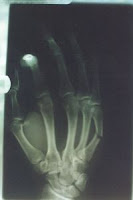Parents regularly discuss their children’s health with their health care providers but rarely do they discuss their kid’s bone health, even though bone health is a central part of a kid’s overall health. Building strong bones by adopting nutritional and healthy lifestyle habits in childhood is very important and helps prevent bone loss and osteoporosis later in life.
Childhood, defined here as between infancy and adolescence, is a critical period for bone development. During this period, bones are actively formed through a process called remodeling, which involves breaking down old bones and building new ones. During preteen and adolescence, more bones are built than broken down and as a result, bone growth takes place during these periods. Kids are generally encouraged to consume foods rich in calcium because their bones need the mineral for development.
Most of the calcium (about 99%) in a kid’s body is found in his/her bone, which is used to form bone tissue. The amount of bone tissue in a given bone is commonly referred to as bone mass. As more calcium is deposited in bones, more bone tissue is made. This helps bones increase in strength and density, and this process continues until bone mass peaks, meaning that a person’s bones have achieved their maximum strength and density.
Experts do not agree on the precise age when bone mass peaks but for most people, it peaks by age 30. However, medical experts believe that 99% of peak bone mass is actually acquired by age 18 in girls and age 20 in boys, which makes youth the most important time to invest in a kid’s bone health. After this point, bone growth slows down considerably.
The question is what can a Mom do to help? Moms can do two important things: Encourage her kids to develop healthy eating habits and to get plenty physical activity. Encouraging your kids to adopt proper eating habits now can make all the difference in the world as they age. One way to accomplish this goal is to lead by example. Believe it or not, your kids watch everything you do- good or bad and they are unlikely to do what you say rather than what you do.
The Academy of Sciences recommends that kids 4 - 8 years old should get 800 milligrams of calcium a day while those 9 – 18 years old should get 1300 milligrams. These intake levels can be easily met through balanced diet that includes dairy products, fruits, and vegetables as well as calcium fortified breakfast cereals and juice. Steps as simple as replacing a can of soda each day with low-fat milk can make a huge difference in your kid’s bone development.
Also, your kids need vitamin D each day. Vitamin D helps the body absorb calcium in the small intestine. The main sources of vitamin D are fortified food and sunlight. Most active kids do not have any trouble making enough vitamin D in their skin from sunlight. Exposure to sunlight for up to 15 minutes a day may be all they need to meet their vitamin D requirement.
In addition to promoting healthy eating, moms can encourage their kids to get involved in regular physical activity that puts stress on their bones. Putting stress on bones helps them increase in size and strength. There are many physical activities that are good for the bone. A few examples are running, walking, aerobics, softball, baseball, basketball, table and lawn tennis, dancing, skating, football, and weight lifting.
Bone health is an important part of a kid’s health, and moms can help their kids build strong bones. Encouraging them to eat foods rich in calcium and vitamin D is one way to achieve this goal; the other is getting them involved in regular physical activity. When it comes to bone health, there is such a thing as “too little, too late.” The health habits you help your kids form today can make, or literally break, their bones later in life.
Article Tags: Calcium, Osteoporosis, Vitamin D, Bone Health, Foods Rich In Calcium, Bone Health And Children
About the Author:
Chima Njoku is a freelance medical writer and publisher of free consumer friendly information on vitamins and minerals. To learn more about how calcium and vitamin D promote bone health, go to http://healthsolutionsontheweb.com/Calcium.html
Article Source: http://www.articlesbase.com/wellness-articles/bone-health-and-children-how-parents-can-help-348630.html
Exercise & healthy diet - the 2 components of healthy weight loss.
Whisperinghome
Articles on home improvement, home decor, gardening,
home safety, cleaning & storage ideas, more!
Natural Health & Nutrition
Up-to-date articles on health, fitness and nutrition





